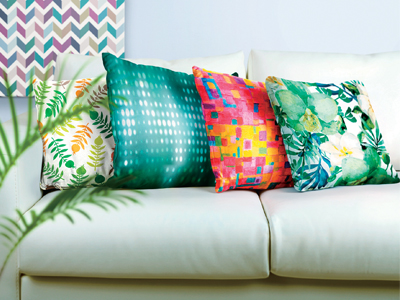Dye sub machines such as Roland’s RT-640 can be used for applications such as cushions
Digital textile printing equipment can be an affordable option for adding new applications. Simon Eccles discusses the options.
Could you add textiles to a general commercial print business? It’s never been easier to get into textile printing, with attractively priced inkjets and processes that are nothing like as fiddly in the past.
The same companies that make eco-solvent printers, such as Epson, Mimaki, Mutoh and Roland DG, also offer textile printers. In some cases these are virtually the same models but running dye sublimation inks to print onto transfer paper. Others have more major modifications to handle rolls of textiles for disperse printing (printing directly onto the fabric using the same inks as dye sub) or specialist inks. HP also plugs its Latex ink printers for some textile applications.
All these entry-level printers are versatile and easy to use with a minimum of post-print processing – usually heat and pressure. They may need pre-coated textiles for the best results though. Latex doesn’t need fixation but the durability of the image isn’t so good…
Read the full feature online here





